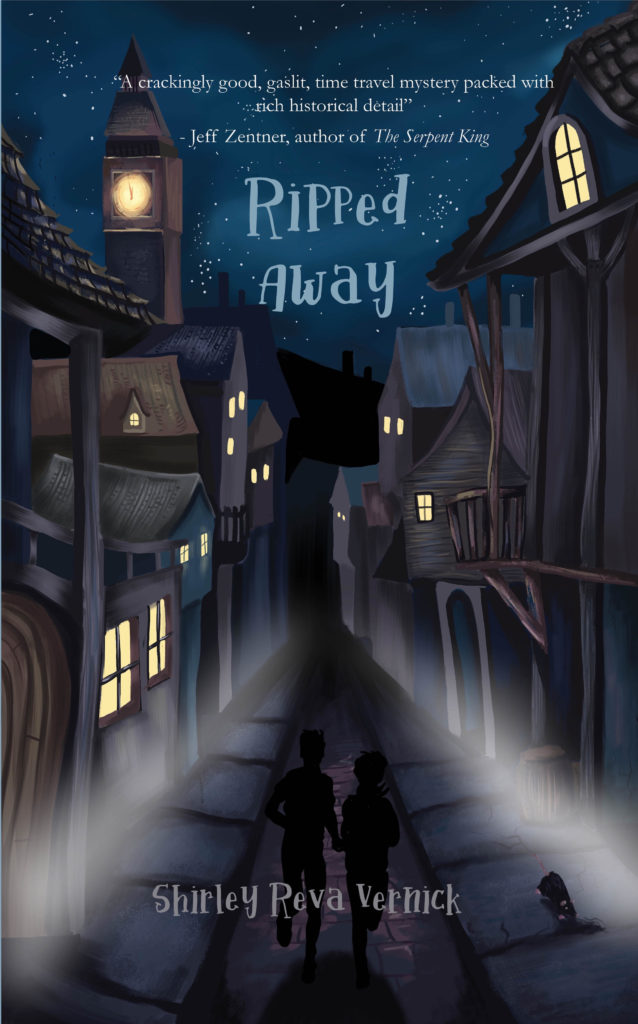“Point-of-View Flip as a Way into Creative Writing”
I’m a big fan of the “point-of-view flip” activity for young writers. That’s where students are asked to retell an existing story (or scene or chapter) from a POV other than the one presented in the original. This exercise can be done with a short and simple tale like The Three Little Pigs (e.g., the wolf’s first-person POV) or with more advanced texts. I like this literary workout because, besides being just plain fun, it can help writers grow their skills. Here’s my thinking:
It’s hard to write creatively, from blank, on demand. That’s why I always hated assignments like, “Write a story from this week’s spelling words.” It’s why I’ve never gone to writers’ retreats, where I’d be put up for a random week not of my own choosing and expected to produce. I can no sooner schedule my creative juices than I can schedule the rain. I suspect that many students feel the same way.
With the POV flip exercise, students don’t have to pull characters or plots out of thin air. Those elements are already there, freeing students to focus on the craft of show-not-tell, dialogue, pacing, etc.
POV flipping shows writers how much hinges on POV when telling a story. After publishing four novels and several short stories, I’m more certain than ever that POV is among the most pivotal—and challenging—determinations to make in the writing process.
Take, for instance, my new upper-MG/early-YA novel, Ripped Away, which is set in Victorian London during the Jack the Ripper spree. I wrote my first draft in the third-person perspective of a boy growing up in London during that time. Something wasn’t right though. This POV didn’t feel immediate enough, intimate enough. So I rewrote the book in the first-person POV of that same character. It was an improvement, but I still wasn’t satisfied. Something was missing.
Eventually, I understood that the book wanted a narrator with a modern voice and contemporary sensibilities, because that’s how the tale would best resonate with readers. So I re-wrote it again, and that’s how Ripped Away became a time-travel fantasy.
When I think about how different the book would be if told from yet a different viewpoint—that of another character, or several other characters, or even an omniscient narrator—I see that Ripped Away could have been many stories. It took time and effort to discover the best POV for the story I wanted to tell, and it was well worth the investment. If students get the chance to experiment with viewpoint through the POV flip exercise, I think it will help them choose the right POV when they do create their own original text.
The flip activity keys students into POV in their reading. You can’t play around with viewpoint in your writing without it seeping into your awareness of what you read. I know several readers who actually use POV as a guide to selecting their leisure reading. Some insist on female first-person POV, others on third-person limited, yet others on multiple points of view. My own daughter goes for first-person stories that are told from the distance of time—an older adult looking back on his or her youth. I, for one, am drawn to the first-person peripheral narrator, like The Great Gatsby’s Nick Carraway. Throw in a dash of unreliability, and I’m hooked. I also like books that skillfully mix it up—part first-person, part third-person, and a sprinkling of second-person for added intensity.
So who knows? Maybe we can get kids to read more by guiding them to stories with the POV they prefer. And kids who read more—anyone who reads more—will be a better writer for it.
Coming February, 2022
About the Book: Ripped Away is based on the real experiences of Jewish immigrants to London during the Jack the Ripper spree, when xenophobia ran high.
In the story, a fortune teller reveals that classmates Abe and Mitzy may be able to save someone’s life…and then she sweeps them to the slums of Victorian London in the middle of the Jack the Ripper spree. To get back home, they’ll have to figure out how the fortune teller’s prophecy is connected to one of history’s most notorious criminal cases. They’ll also have to survive the outpouring of hate toward Jewish refugees that the Ripper murders triggered.
Vernick’s purpose in writing Ripped Away is to illuminate this episode in history, as well as to inspire readers to contemplate possible responses to intolerance. National Jewish Book Award-winning author Anne Blankman calls Ripped Away “an engrossing adventure. From the moment Abe and Mitzy are swept back in time to the infamous Jack the Ripper, readers will clamor to find out what happens next.”
Book Trailer:
About the Author: Shirley Reva Vernick is the author of four novels for young readers. The Blood Lie is an American Library Association Best Fiction for Young Readers pick and a Sydney Taylor Book Award honoree. Remember Dippy won the Dolly Gray Literature Award from the Council for Exceptional Children. The Black Butterfly is a Junior Library Guild selection. Ripped Away will be released February 8, 2022 by Regal House Publishing.
Shirley is a graduate of Cornell University and an alumna of the Radcliffe Writing Seminars. When not creating stories, she mentors incarcerated individuals with their writing via the Prisoner Express program.
Please see www.shirleyrevavernick.com for more.
Thank you, Shirley, for your wonderful creative writing activity and for sharing your book–we cannot wait until it is published!



1 thought on “Author Guest Post: “Point-of-View Flip as a Way into Creative Writing” by Shirley Reva Vernick, Author of Ripped Away”